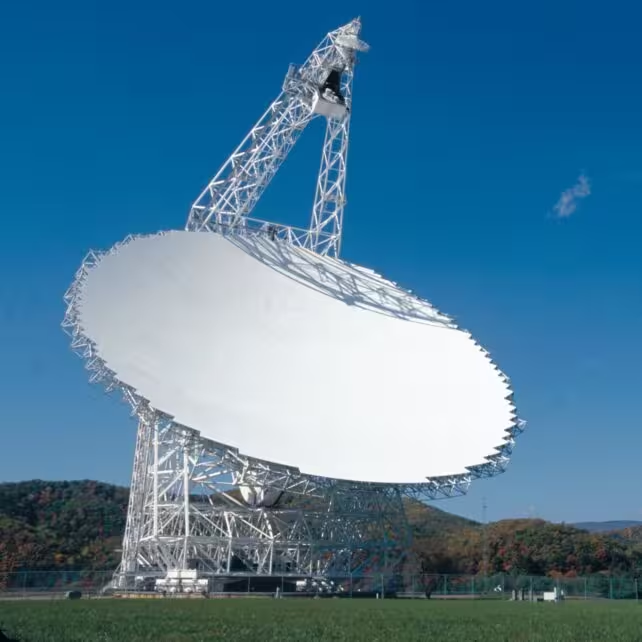4 Minutes
Earth's Radar Systems: Silent Beacons Across the Cosmos
Every commercial flight that departs from a bustling airport—from London's Heathrow to New York’s JFK—might be quietly broadcasting the presence of intelligent life on Earth far beyond our Solar System. Recent scientific research indicates that the advanced radar networks ensuring global air traffic safety are also generating powerful radio emissions that travel deep into space, potentially serving as inadvertent "technosignatures"—signals of technological civilizations—for any extraterritorial observers within 200 light-years.
Technosignatures: Exploring Earth's Electromagnetic Footprint
The study, led by Ramiro Caisse Saide, a doctoral researcher at the University of Manchester, investigates what Earth’s so-called "electromagnetic leakage" would look like to alien astronomers with radio telescopes comparable to those developed here on our planet. Saide and his collaborators presented their findings at the Royal Astronomical Society's National Astronomy Meeting, marking a significant step forward in our understanding of how human technology could be detected from space.
Astonishingly, airport radar systems worldwide emit radio signals with a combined output estimated at 2×10¹⁵ watts. These emissions are strong enough to be picked up by powerful radio telescopes—such as West Virginia’s Green Bank Telescope—even from a distance of 200 light-years. This detection radius contains more than 120,000 stars, many of which may host potentially habitable exoplanets capable of nurturing alien civilizations with technological abilities parallel to ours.

Military Radars and the Unique Signature They Emit
Civilian air traffic radars are not the only source of this cosmic leakage. Military radar installations generate even more distinctive electromagnetic patterns, producing tightly focused directional beams reminiscent of sweeping lighthouses. In certain directions, these beams can reach emissions up to 1×10¹⁴ watts, marking Earth's presence with greater precision and range.
The Expanding Role of Technosignatures in SETI
The concept of technosignatures has transformed the Search for Extraterrestrial Intelligence (SETI), traditionally aimed at discovering intentional signals from advanced civilizations. This new research approaches the question differently: What unintentional signals does humanity broadcast into the cosmos, and could we similarly detect leaked emissions from distant worlds?
Simulating Alien Eavesdropping: How Radar Emissions Travel
Researchers simulated how Earth's radar output would appear to observers orbiting stars like Barnard’s Star (just 6 light-years away) or AU Microscopii (32 light-years away). Their models revealed that the detectability of these signals depends both on the global distribution of radar facilities and where the observer is located relative to Earth. As the planet rotates, different radar emitters come into and out of view, resulting in a fluctuating but pervasive radio signature.
Building on earlier work, which showed that mobile phone towers could be detectable up to 10 light-years away, this research underscores why airport radars—designed for continual, volumetric scanning of airspace—are especially significant. The dynamic nature of these emissions means that any technologically advanced civilization with sufficient observational equipment could recognize the signatures of air traffic management and possibly even deduce their artificial origins.

Universal Signals—and Their Place in the Search for Alien Life
A key implication of this study is the potential universality of radar emissions as technosignatures. Any planet developing complex aviation technology and radar surveillance would likely create similar electromagnetic footprints. Thus, the signals reaching out into interstellar space from Earth could serve as a ‘calling card’ for intelligent life, equally as recognizable as our radio and television transmissions.
With the nearest potentially habitable exoplanet, Proxima Centauri b, located just 4.2 light-years away, any technologically adept inhabitants could already be aware of Earth's presence thanks to our radio-frequency leakage. Conversely, Earth-based radio astronomers could, in the future, detect comparable radar emissions emanating from other inhabited worlds within a few hundred light-years.
In Saide’s words, this research "supports both the scientific quest to answer the question ‘Are we alone?’ and practical efforts to manage the influence of technology on our world and beyond.” The daily operations of airports or military exercises, conducted with little thought for the cosmos, may well be writing our planetary address in the electromagnetic spectrum for the Milky Way to find.
Conclusion
This research highlights how everyday technologies—from airport radar arrays to large-scale military systems—continuously broadcast our presence to the universe. These technosignatures serve as unintentional but powerful evidence of intelligent life on Earth, capable of reaching thousands of star systems across vast distances. As we refine our own search for extraterrestrial civilizations, understanding our planet's electromagnetic emissions can inform both the detection of alien technosignatures and strategies for future planetary protection. The next time you fly, consider that your path through the skies might be visible—albeit faintly—to any neighbors peering at us from afar.
Source: universetoday



Comments